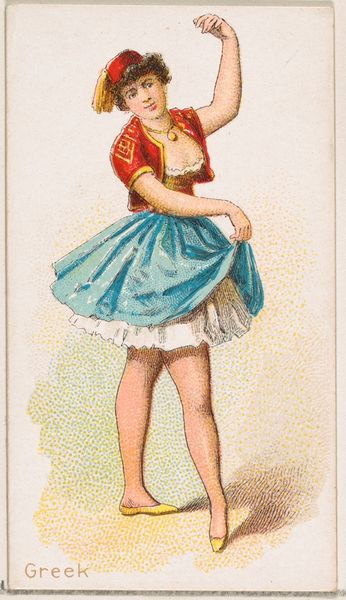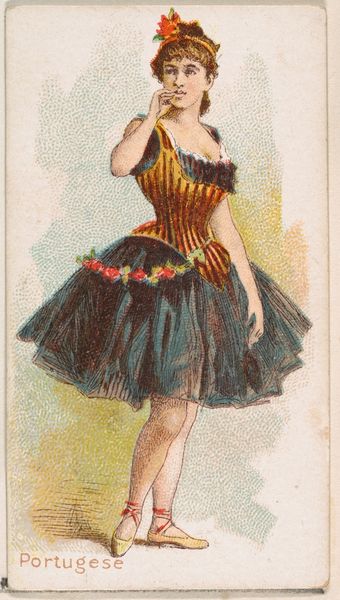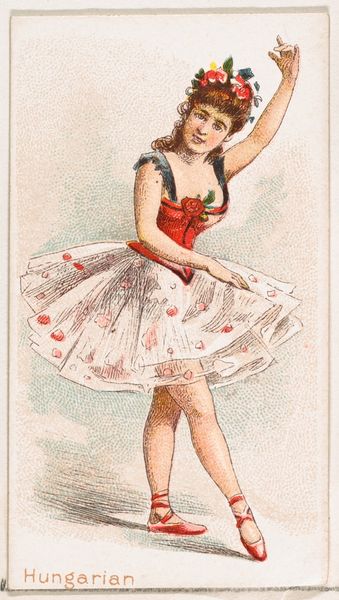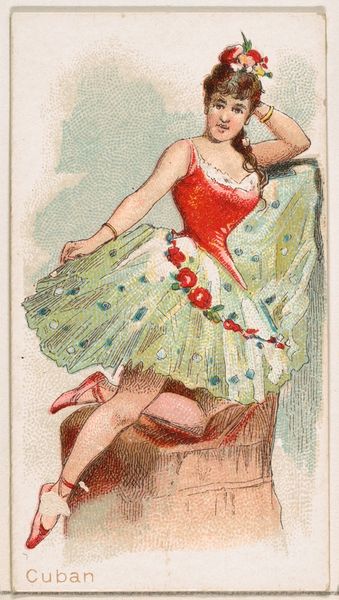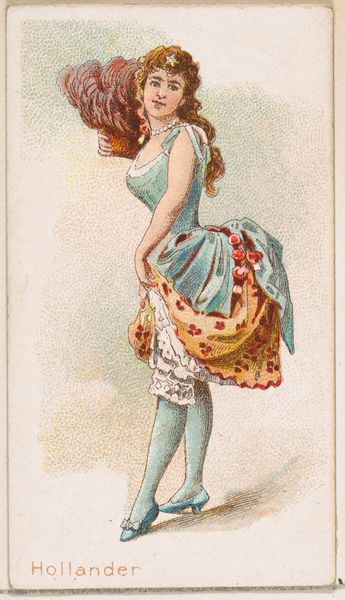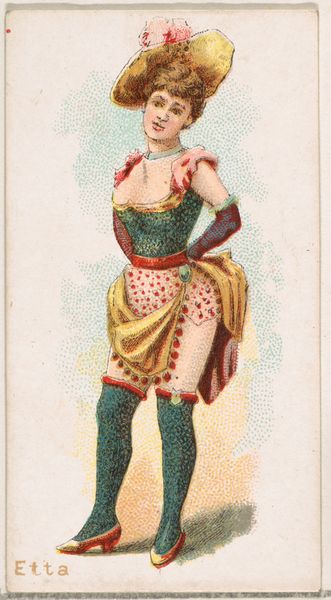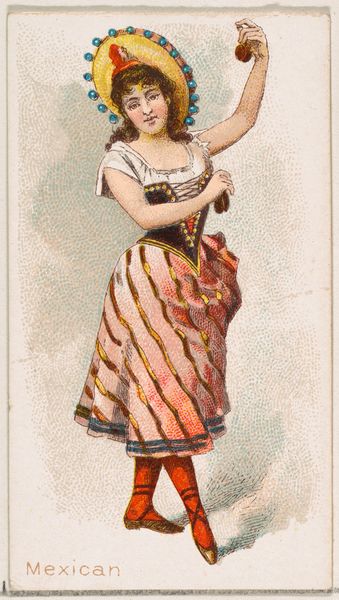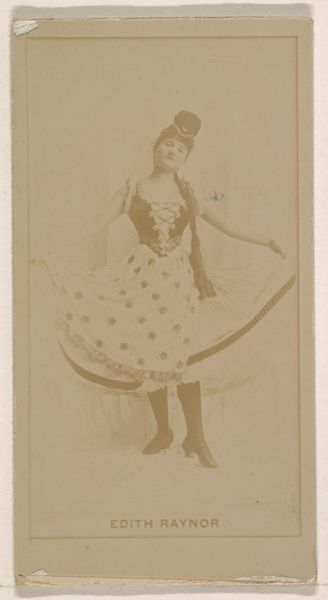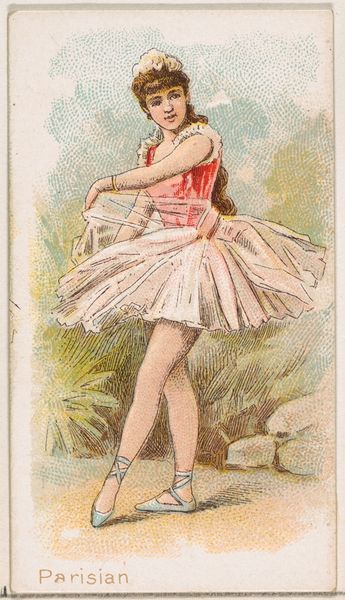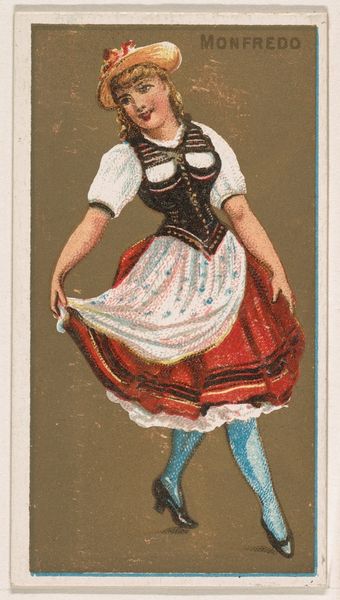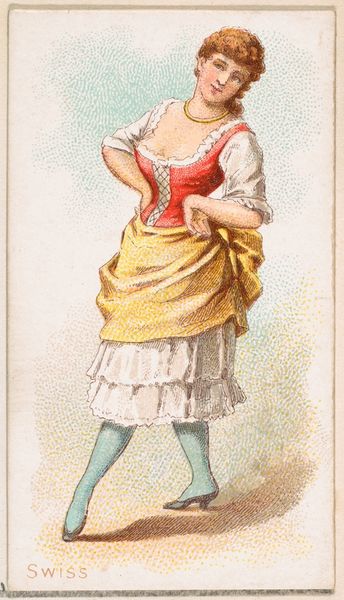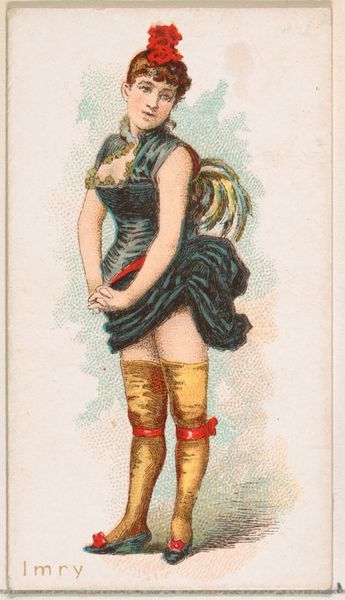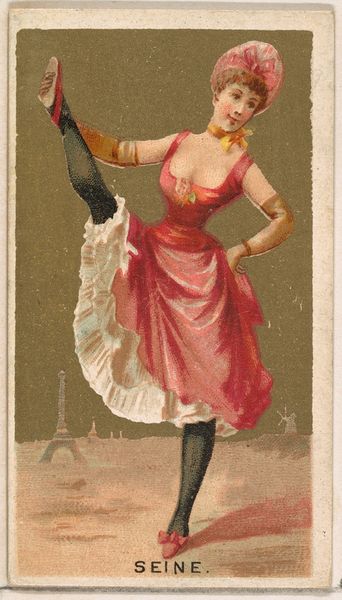
Italian Dancer, from the Dancing Women series (N186) issued by Wm. S. Kimball & Co. 1889
0:00
0:00
drawing, print
#
portrait
#
drawing
# print
#
impressionism
#
figuration
#
historical fashion
#
watercolor
Dimensions: Sheet: 2 11/16 × 1 7/16 in. (6.9 × 3.7 cm)
Copyright: Public Domain
Curator: There’s a delicate air surrounding this small print. It’s titled "Italian Dancer, from the Dancing Women series," dating back to 1889, produced by Wm. S. Kimball & Co. It’s currently housed here at The Met. Editor: Yes, the composition is so graceful! It almost feels like a fleeting glimpse. But something about her stance seems... a little too poised, perhaps? Curator: Interesting observation! You have to consider that this was not created as “high art.” These prints were actually distributed as premiums with Kimball & Co. cigarettes. Think of them as precursors to trading cards, aimed to entice a largely male consumer base. Editor: So the "Italian Dancer" then becomes a symbol…of exoticism and entertainment commodified and distributed as a promotional item. What's striking to me is how this particular imagery feeds into a certain European fascination with, or perhaps objectification of, Italian culture. Curator: Precisely. The dancer is rendered in watercolor, imbuing a soft, romantic aura, but this idealization obscures the complex reality of the Italian diaspora. The rose in her hair, the colors of the ribbons, the suggestion of passion - they create an idea of Italy, not necessarily the actuality. Editor: And this manufactured imagery perpetuates specific narratives. I wonder how such widespread distribution impacted societal views on Italian identity at the time? The cigarette cards functioned almost like miniature propaganda. Curator: That’s certainly something to consider. And the “Dancing Women” series overall tells us a lot about the objectification of women as exotic figures for popular consumption. Her placement into that larger group says something about the popular culture of the time, even more than the depiction of Italy. Editor: Looking at it from that angle provides a new level of commentary. It transforms it from a seemingly innocent portrait to something much more complex and indicative of that period. Curator: Exactly. There's so much layered into such a small and seemingly simple image.
Comments
No comments
Be the first to comment and join the conversation on the ultimate creative platform.
